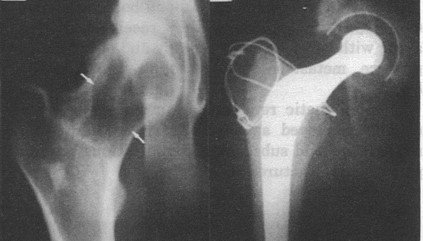Reasons Why I Need Hip Replacement Surgery
Hip replacement surgery is suggested when all other options fail. These options may include using over-the-counter drugs for managing pain, using canes and walkers to aid movement, exercising around the hip, and non-steroidal anti-inflammatory drugs (NSAIDs) for treating inflammation and pain.
The following Conditions can cause worn-out or damage to the hip joint, sometimes necessitating a hip replacement surgery (1);
Hip arthritis
Hip arthritis occurs due to cartilage damage at the hip joint. This condition worsens over time and can be very painful, affecting how you move and your overall quality of life.
The cartilage acts as a slippery layering between the ball (end of the femoral head) and the socket (acetabulum of the pelvis) that allows the ball to slide and rotate effortlessly when the leg moves. The cartilage that lines the outer rim of the socket is called Labrum, which provides stability.
When there is damage to the cartilage at the hip, it becomes uneven and rough. Thinning of cartilage causes the space between the joints to narrow. In severe cases, the bones begin to rub on each other, causing pain and stiffness. When friction occurs at the hip, it can lead to bone growing on the edges of a bone which alters the shape.
Types and Causes of Hip Arthritis
1. Osteoarthritis.
Also known as wear-and-tear arthritis, is a degenerative disease that worsens over time. It damages the joint cartilage that covers the femoral head and acetabulum of the pelvis that helps joints move smoothly without pain. It is the most common cause of a hip replacement.
Stages of Hip Osteoarthritis
Stage 1- Slight wear and tear of the hip joint with little bone spurs, causing little or no pain.
Stage 2- Also called mild hip osteoarthritis. At this stage, the cartilage begins to wear off causing bone spur growth often visible on X-rays. Symptoms include stiffness, pain, and discomfort.
Stage 3- Also called moderate hip osteoarthritis. At this stage, the cartilage begins to disintegrate and the space between the hip bones becomes straight. Activities like kneeling, bending, and walking cause swelling and pain.
Stage 4 - This is the most severe stage. You feel pain and stiffness at the hip often while sleeping because the cartilage is almost gone.
2. Rheumatoid Arthritis.
Rheumatoid arthritis is caused by an overactive immune system attacking healthy tissues at the joint hip. Although majorly, it affects smaller joints such as the fingers and wrist and may not be obvious in the hip until it causes symptoms. RA produces inflammations that break down the hip cartilage over time, resulting in damaged and deformed hip joints.
3. Psoriatic Arthritis
Psoriasis is a skin condition that causes red patches topped with silvery scales and a rash. In some people, it also causes swelling and painful joints. Although people develop psoriasis for years before being diagnosed with psoriatic arthritis. (2)
Risk factors for Hip Arthritis
Age: the older you get, the more tendency to have worn out your hip cartilage
Gender: Post-menopausal women are more likely to develop osteoarthritis than men
Structural or developmental abnormalities: Irregular-shaped bones due to growth abnormalities can lead to abnormal stress on the hip joint. (3)
Overweight: being obese puts extra weight on the hip
Injury: Labral tears or Hip fractures can cause the development of arthritis years later.
Overuse of the hip joint: Sports and jobs that place stress on the hip by physically repetitive motion can cause the bones in the hip joint to slowly weaken and become painful.
Other health conditions: People with high cholesterol, high levels of iron in the blood, diabetes, and vitamin D deficiency are more likely to develop osteoarthritis.
4. Fracture neck of femur (hip) –
A fractured neck of the femur is one of the common fractures that occur in old age due to osteoporosis (weak bone). Your doctor might decide on Total hip replacement if the condition is suitable for you.
5. Osteonecrosis
This occurs when there is not enough blood supply to the ball part of the hip joint and necrosis begins to happen. When this occurs, the bone might collapse and deform, resulting in dislocation or fracture of the hip joint.
6. Tumor of the hip joint
Although rare, cancer of the hip might be a cause of hip pain. Chondrosarcoma is a type of bone cancer that is mostly found in the hip. It grows in flat bones, like the hip, pelvis, and shoulder blade. Metastatic cancer can also affect the hip joint, spreading from different parts of the body like the breast, lungs, and prostate. (4)
References
2. https://www.mayoclinic.org/diseases-conditions/psoriatic-arthritis/symptoms-causes/syc-20354076
3. https://www.hopkinsmedicine.org/health/conditions-and-diseases/hip-arthritis?amp=true
All information on this website (https://www.doctor-pal.com) is published in good faith and for general information purposes only. Dr. Indranil Pal does not guarantee this information's completeness, reliability, or accuracy. Actions based on the information found on this website are entirely at your own risk. Doctor Pal shall not be liable for any loss and/or damage associated with the use of our website. Contact your doctor who can advise you on your health and illness.







